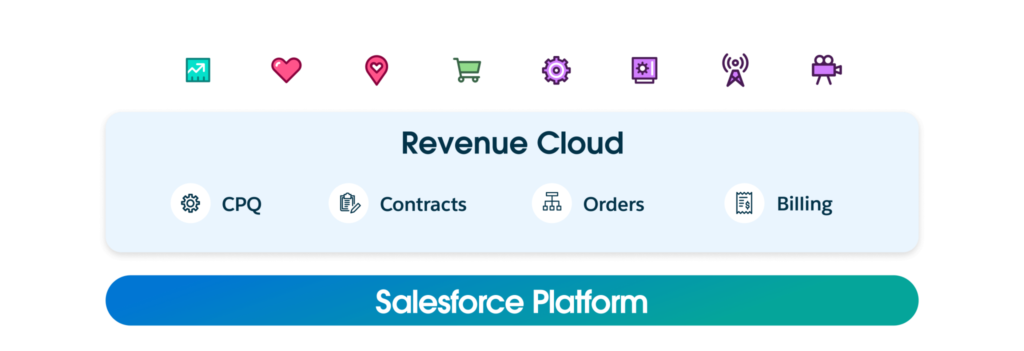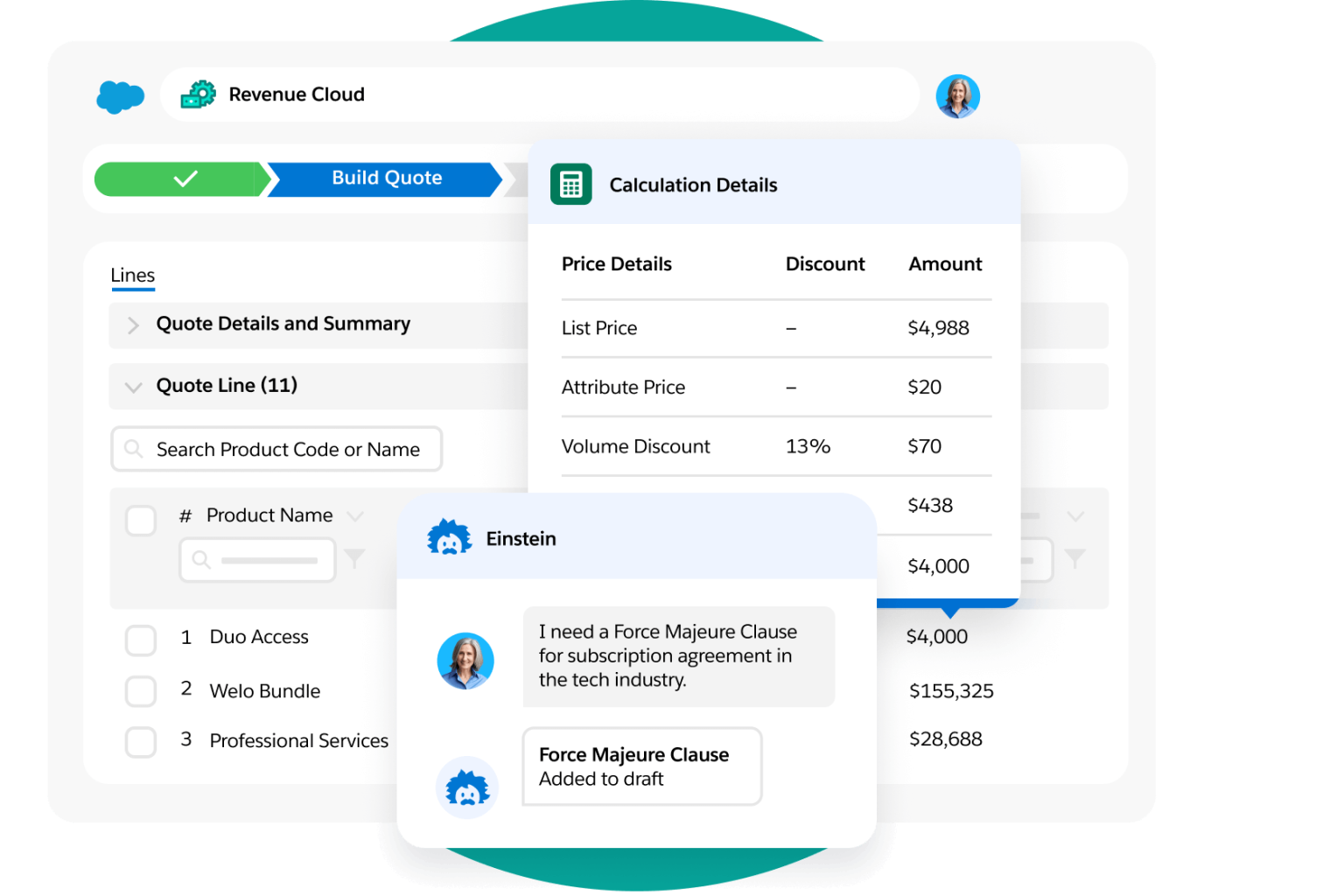Introduction
Salesforce has long been at the center of the revenue management conversation, helping businesses scale their sales and finance operations with tools like Sales Cloud, Salesforce CPQ & Billing, and Commerce Cloud. With the launch of Salesforce Revenue Cloud Advanced, Salesforce is taking a significant leap forward—positioning itself as the end-to-end solution for modern revenue lifecycle management.
This shift is driven by the need for businesses to monetize more complex pricing models—including subscriptions, hybrid models, and usage-based pricing—while ensuring seamless integration between sales and finance teams. Revenue Cloud Advanced is designed to unify these processes within Salesforce, but it also raises important considerations for finance leaders who need to maintain existing ERP investments.
This primer explores what Revenue Cloud Advanced is, its core capabilities, and what businesses should consider when evaluating the transition.
What is Salesforce Revenue Cloud Advanced?

Revenue Cloud Advanced is Salesforce’s next-generation revenue management platform, designed to support the full quote-to-cash process within Salesforce. It integrates quoting, contract lifecycle management, order management, and billing into a single, natively built Salesforce experience.
Salesforce is positioning RCA as a unified system that eliminates silos between sales, finance, and legal teams. Instead of relying on multiple integrated solutions, businesses can manage their entire revenue process on the Salesforce Platform—with automation, AI-driven insights, and embedded finance functionality.
Key Capabilities of Revenue Cloud Advanced
Salesforce RCA introduces several powerful capabilities:
- Unified Data Model – Built natively on Salesforce, ensuring real-time data flow across the entire revenue lifecycle without the need for complex integrations. Because Revenue Cloud Advanced runs on Salesforce Core, customers benefit from access to all new features with every seasonal release. Additionally, this architecture makes it easier to support models like self-service, as all Salesforce products can seamlessly leverage the Revenue Cloud Advanced engine.
- Flexible Product and Pricing Models – Businesses can now configure a single product with multiple pricing models (one-time, subscription, usage-based) without duplicating product records.
- Enhanced AI and Guided Selling – Agentforce supports automated pricing recommendations, contract drafting, and approval workflows, reducing sales cycle friction.
- Dynamic Revenue Orchestration (DRO) – Automates complex order decomposition, fulfillment, and billing processes, enabling seamless execution of multi-stage transactions (e.g., software provisioning, physical shipments, recurring services).
- Contract Lifecycle Management (CLM) – Streamlines the contract process by automating contract creation, negotiation, approvals, execution, and ongoing management.
- API-First Architecture – Headless APIs allow Revenue Cloud Advanced to be embedded in e-commerce platforms, partner portals, and external sales channels.
For more details on these features, check out the Revenue Cloud Trailhead.
Usage-Based Pricing & The Shift Toward Flexible Monetization
Salesforce recognizes that businesses are increasingly adopting consumption-based and hybrid pricing models. Revenue Cloud Advanced is designed to support these models by allowing businesses to configure, sell, and manage usage-based products natively within Salesforce.
However, Revenue Cloud Advanced provides robust native capabilities for quoting and managing usage-based pricing. For high-volume businesses requiring complex mediation and rating at scale, complementary solutions like Continuous ensure seamless automation and financial alignment.. High-volume businesses—such as SaaS, cloud services, and telecom—will still need to ensure that their finance teams have the tools required for rating and revenue recognition.
For an in-depth look at the challenges of recurring billing and how the market is evolving, check out Rethinking the Recurring Billing Status Quo.
Integrating Revenue Cloud Advanced with ERP and Financial Systems
One of the biggest questions finance leaders face when evaluating Revenue Cloud Advanced is: How does this impact our ERP strategy?
Salesforce is positioning Revenue Cloud Advanced as a modern, flexible revenue operations platform that seamlessly integrates with existing ERP investments while streamlining revenue workflows. For companies with ERP investments in platforms like NetSuite, SAP, and Oracle, Revenue Cloud Advanced ensures a seamless integration, helping finance teams streamline revenue operations without disrupting their existing workflows. These systems remain critical for revenue recognition, general ledger reporting, and financial compliance.
Revenue Cloud Advanced supports API-based integrations with ERPs, ensuring that businesses don’t have to completely shift their financial operations into Salesforce. Instead, companies can leverage Salesforce as their revenue operations hub while maintaining ERP workflows for accounts receivable, taxation, and compliance.
For a seamless integration between Salesforce Revenue Cloud Advanced and NetSuite, our Continuous for NetSuite Advanced Financials SuiteApp ensures automated data handoff between sales and finance, eliminating manual reconciliations and streamlining invoicing and revenue recognition.
For finance teams, this means:
- More automation in revenue management, reducing the need for manual reconciliations between Salesforce and ERP.
- Real-time rated usage data flows, ensuring finance has full visibility into consumption-driven revenue streams.
- Accurate revenue recognition compliance with standards like ASC 606 by ensuring that invoicing and revenue schedules align between Salesforce and ERP.
Is Revenue Cloud Advanced Right for Your Business?
If your business is already using Salesforce for revenue management, Revenue Cloud Advanced represents a powerful opportunity to modernize quote-to-cash operations. However, the transition requires careful consideration, particularly if your finance team depends on ERP-driven billing, rating, and compliance workflows.
Key evaluation questions:
- Do you need more flexibility in pricing models, including subscriptions, usage-based, and hybrid models?
- Is reducing dependency on custom integrations a priority for your sales and finance teams?
- Does your finance team need advanced revenue automation and real-time billing workflows?
- How will your ERP interact with Salesforce if you transition to Revenue Cloud Advanced?
Salesforce’s vision is clear: Revenue Cloud Advanced is the future of quote-to-cash on Salesforce. However, businesses need to align this vision with their own finance operations, ensuring that ERP integration and usage-based billing scalability are part of the strategy.
Final Thoughts
Salesforce Revenue Cloud Advanced is an exciting step forward for businesses looking to streamline and automate revenue operations. As organizations evaluate the transition, the key will be ensuring that their quote-to-cash processes remain scalable, finance-friendly, and aligned with ERP investments.
For businesses exploring the best path forward, expertise in Salesforce revenue solutions, finance operations, and usage-based monetization will be critical. With the right strategy, Revenue Cloud Advanced can deliver the flexibility and automation that modern businesses need—without disrupting financial workflows.
Talk to an Expert
Looking to optimize your revenue operations with Salesforce Revenue Cloud Advanced? Connect with our consumption-based pricing experts to learn how we can help you unlock the full potential of usage-based and hybrid pricing models.
Coming Up Next
📌 Next in this series: Supercharging Salesforce Revenue Cloud Advanced for Usage-Based Pricing & Rating at Scale—How to Extend RCA for High-Volume and Complex Monetization Models.
